JRDG Company Special – Model 9
The Model 9 was available in a few different versions:
Model 9 (1992-approx 1998)
Model 9T (1998-approx 2000)
Model 9Ti (approx 2000-approx 2002)
Model 9Ti HC (approx 2000-approx 2002)
Some of the above models were available in AC only or BPS versions. In case of the latter, the BPS unit would replace the AC powersupply unit, rather than complement it as with all other Rowland amps.
Retail price of the Model 9T in 1998 in the Netherlands 40.749 euro (89.800 guilders) per set
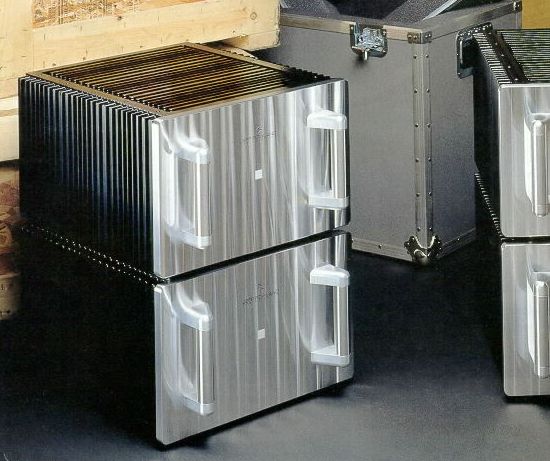
Reference poweramps and natural partners at the time for the Coherence II consisting of two huge boxes per channel. There were a few versions, one important difference being that the 9 could be ordered as an AC or DC version, meaning normal AC operation or power via a BPS (Battery Power Supply). Per channel, one box is the amp itself, the other is either the combination of BPS and switched power supply or only the massive transformers of a linear power supply. These big boxes deliver ample power but perhaps not as much as one might think judged by their imposing looks: 350 watts per channel. This seems lowish compared to big Brystons but Rowland watts are much like tube watts: there’s always much more power than you’d think! The original 9’s are super-stable and can drive virtually any loudspeaker. They draw a lot of current from the wall outlet though: 500 watts idle (switched on but not playing music) and 1200 watts maximum. That’s per channel!
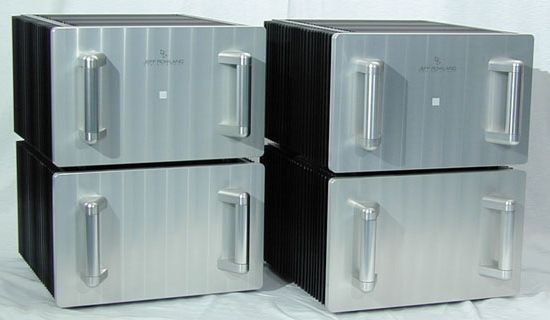
Even though these amps reportedly sounded amazing; both delicate and refined as well as powerful and colourful, there seemed to be a problem with (a part of) the 9ti switched power supply. This supply has some parts in common with the model 10 that I owned and besides my own model 10’s power supply problems, I’ve heard of and read about a few other occasions where (part of) the switched power supply broke down. I think there may have been a reliability issue in a batch of parts of the power supply but this is not confirmed. Nevertheless, sonically these amps are supposed to be amongst the very best available.
A long time user recently reported that his model 9ti HC’s have been working utterly reliably. He has never had a problem. So much as is the case with the Model 10’s, there are some samples that are problematic but when your sample is working just fine it need never break down.
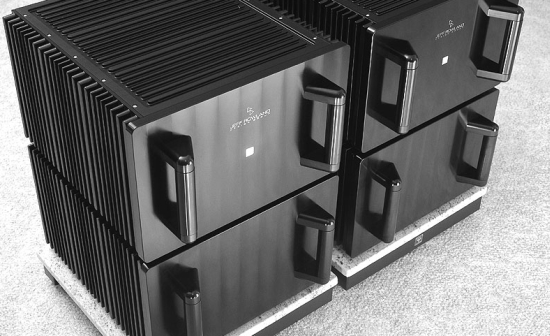
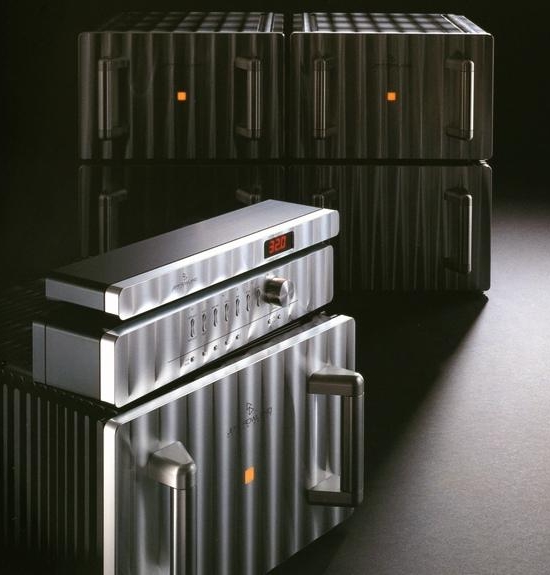
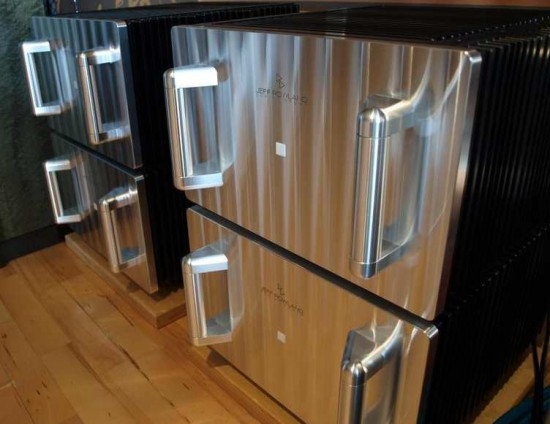
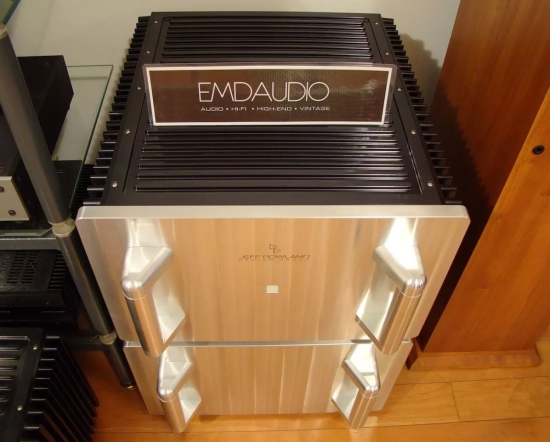
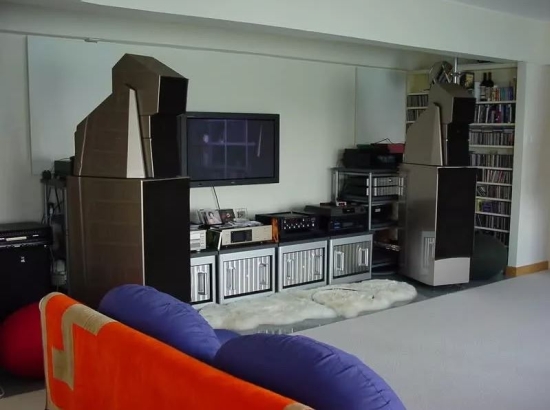
Above: sticking the 9’s in an enclosure with a very narrow opening is not a good idea…
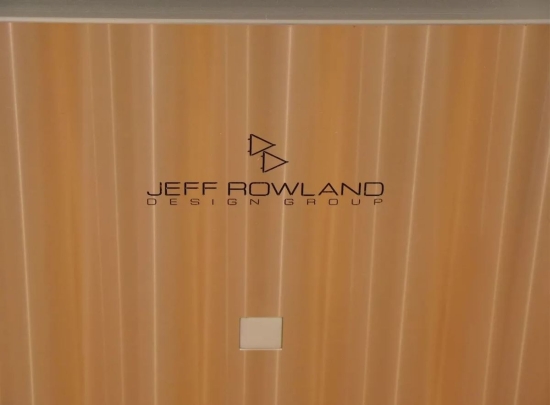
Original Model 9 Inside Pictures
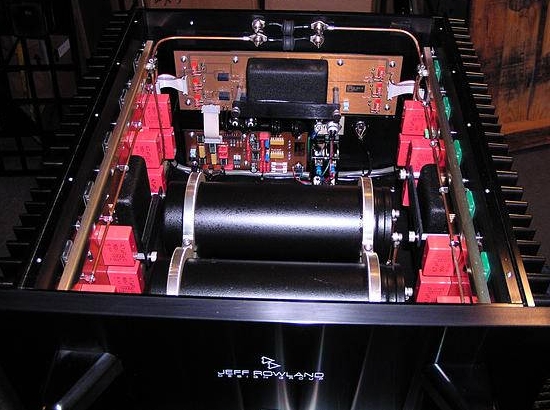
The original Model 9 reminds me of a beefed-up version of the Model 6 that I own: same bipolar transistors, same circuit board material, same manner of capacitor-clamping and same line stage modules. I have never heard a model 9 but I assume that these initial models could potentially be regarded as more powerful model sixes.
Model 9T Inside Pictures
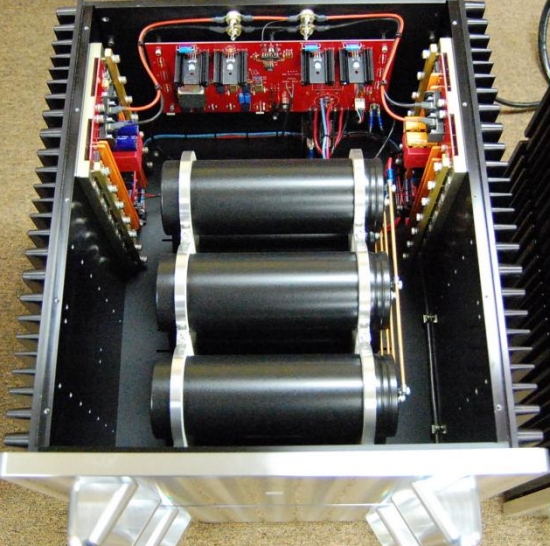
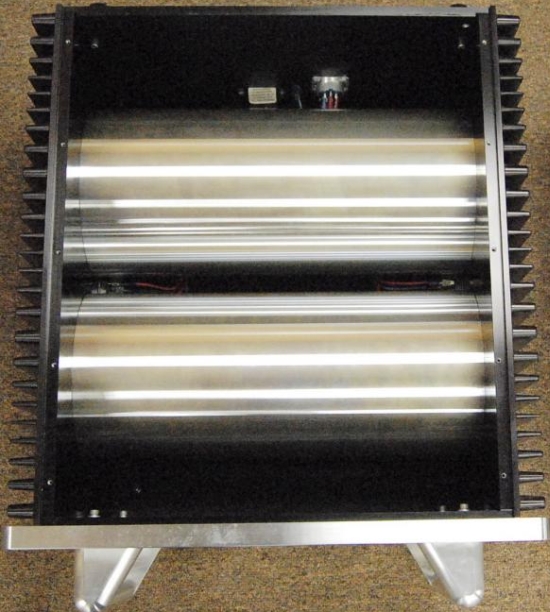
The Model 9T is a more modern version of the Model 9 above, with several circuit changes. I have no official information regarding the exact differences, or as to what’s inside those tubes… but considering that the Model 6 has two toroidal power transformers inside similar tubes, it is likely the same for the Model 9. Unlike the original Model 9’s similarity to the Model 6, the T version strikes me rather as a variation on the model 10 with its orange buss bars and integrated IC’s instead of bipolar transistors, it does seem like it (the AC version at least) doesn’t use the switched power supply though and that’s a good thing because linear power supplies are super-reliable.
Model 9Ti Inside Pictures
The Model 9Ti is a refinement of the Model 9T. Alas, I have no pictures or information on what constitutes the exact changes, but I guess that they must be in the power supply only and this could be the moment when the linear power supply changed into a switching power supply.
I’m leaving this section in, hoping that one day I will find more info or even better, pictures of the Model 9Ti’s power supply.
If you have any more information, do please let me know.
Model 9Ti HC Inside Pictures
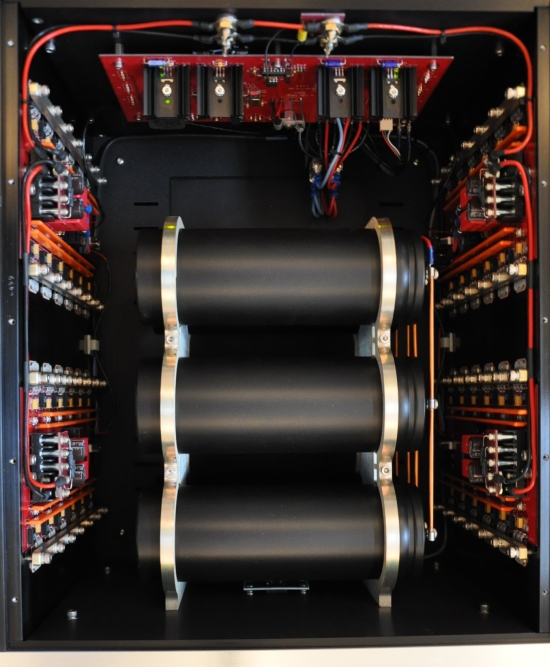
The Model 9Ti is identical to the Model 9Ti above but with double the amount of power IC’s allowing double power output. Alas, this also means double power consumption: 1000 watts per channel idle and I don’t know for a fact they take in at maximum power but it could well be around 2000 watts each.
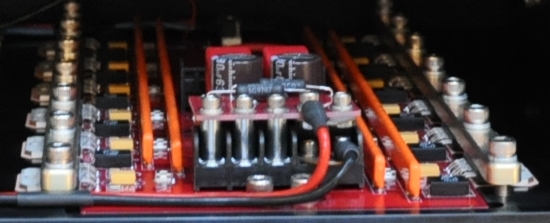
Above is a closeup of one of the Model 9Ti HC’s power circuit boards. You can see that there are no regular bipolar transistors anymore, but multi-leg IC’s instead.
External Power Supply or BPS unit DC Cable Compatibility
Model 9 Features
Two parallel connected XLR Balanced Input jacks for balanced (Differential Mode™) system configurations
Two parallel connected RCA Input jacks for unbalanced (single-ended) system configurations
Two parallel connected speaker output connectors
User-selectable overall gain of 26 or 32 dB
User-selectable input impedance of 36k or 600 ohms for both balanced and unbalanced inputs.
User-selectable absolute phase on balanced input
User-selectable input muting
User-selectable switching between balanced and unbalanced inputs
Front panel standby/power button illumination can be turned off during listening
Optional remote (wired or wireless) power ON/OFF switching
Automatic temperature stabilizing circuitry maintains constant operating temperature
Standby power condition reduces warm-up time
Fail-safe operation provided by user-resetable AC and DC magnetic circuit breakers located on rear panel
Quiet, transient-free operation during power and function mode switching
Automatic input muting under anomalous input or output operating conditions
Balanced Differential Mode™ circuit topology implemented from input to output
Plug-in modules, containing critical electronic circuitry, enhance thermal stability, mechanical integrity and serviceability
Low-resonance, structurally integrated chassis of precision machined aluminum alloy components
Model 9Ti Technical Specifications
The specs below refer to the latest iteration of the product, not HC version
OUTPUT POWER CONTINUOUS RMS WATTS
@ 8 OHMS 350 WATTS
@ 4 OHMS 700 WATTS
BANDWIDTH
0.1 Hz to 160 kHz, -3 dB
SLEW RATE
30 volts per microsecond
THD AND NOISE
less than 0.06% at rated power
DAMPING FACTOR
greater than 300, 20 Hz to 20 kHz, 8 ohms
OUTPUT CURRENT
70 amps continuous, 140 amps peak
OVERALL GAIN & SENSITIVITY (1 WATT, 8 OHMS)
user selectable on back panel
26 dB or 32 dB; 141 mV or 71 mV
INPUT IMPEDANCE
BALANCED 36k or 600 ohms
UNBALANCED 36k or 600 ohms
user selectable on back panel
COMMON MODE REJECTION RATIO
greater than 60 dB, 20 Hz to 20 kHz
ABSOLUTE PHASE
user selectable on back panel
normal or phase-inverted
INPUT MUTE
user selectable on back panel
POWER CONSUMPTION (PER CHANNEL)
50 watts standby; 500 watts operating, idle;
1200 watts maximum
INPUTS
BALANCED/UNBALANCED
user selectable on back panel
2 per channel (XLR)
2 per channel (RCA)
OUTPUTS
2 pair binding posts per channel
DIMENSIONS
POWER SUPPLY
17.5 in (W) x 22.0 in (D) x 11.4 in (H)
44.5 cm (W) x 56.0 cm (D) x 28.5 cm (H)
AMPLIFIER
17.5 in (W) x 22.0 in (D) x 11.4 in (H)
44.5 cm (W) x 56.0 cm (D) x 28.5 cm (H)
WEIGHT (PER CHANNEL)
POWER SUPPLY 128 lbs. (58 Kg)
AMPLIFIER 92 lbs. (42 Kg)
BPS (Battery Power Supplies)
More Jeff Rowland
Jeff Rowland Company Special Main Page
Jeff Rowland Company Special Power Amplifiers